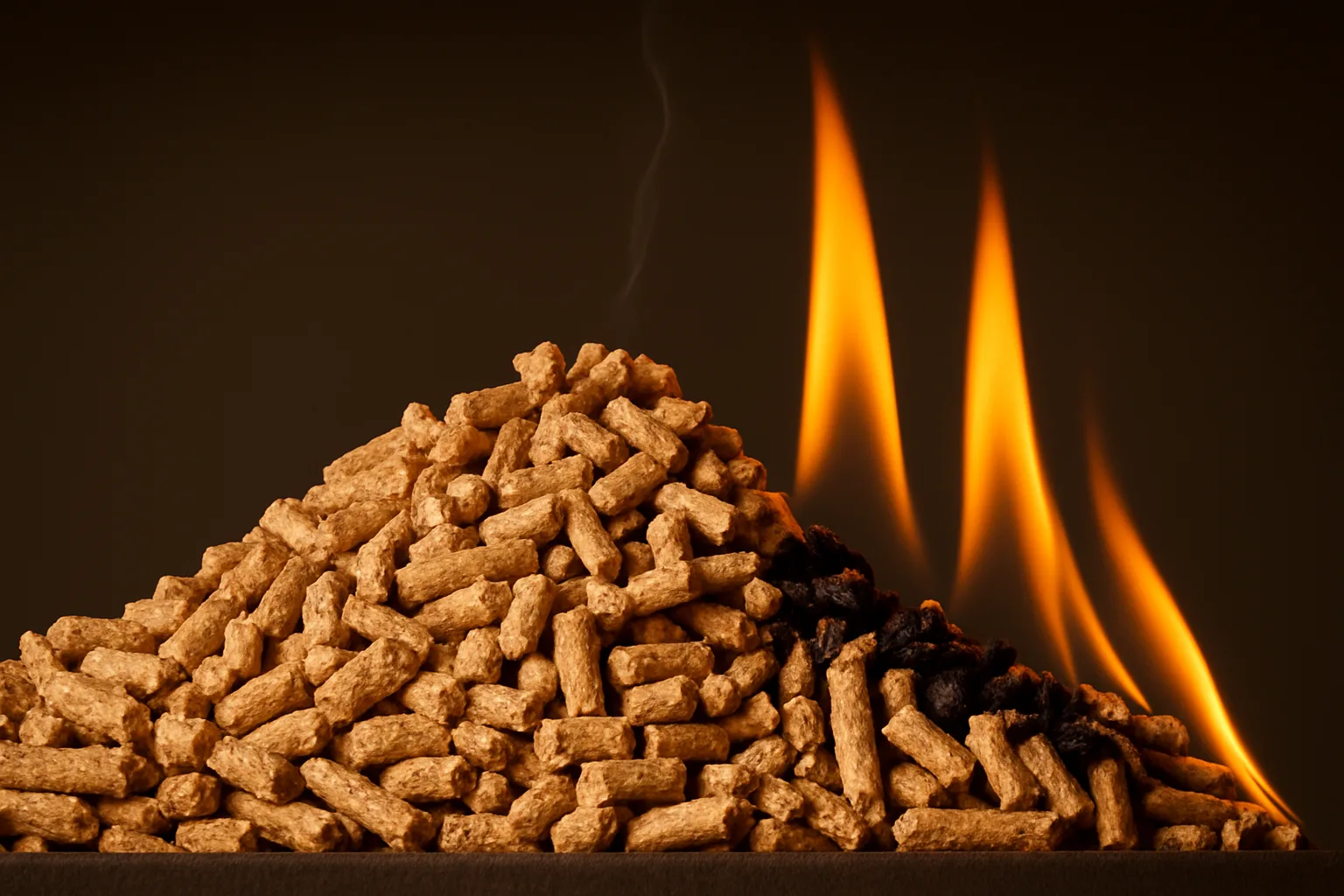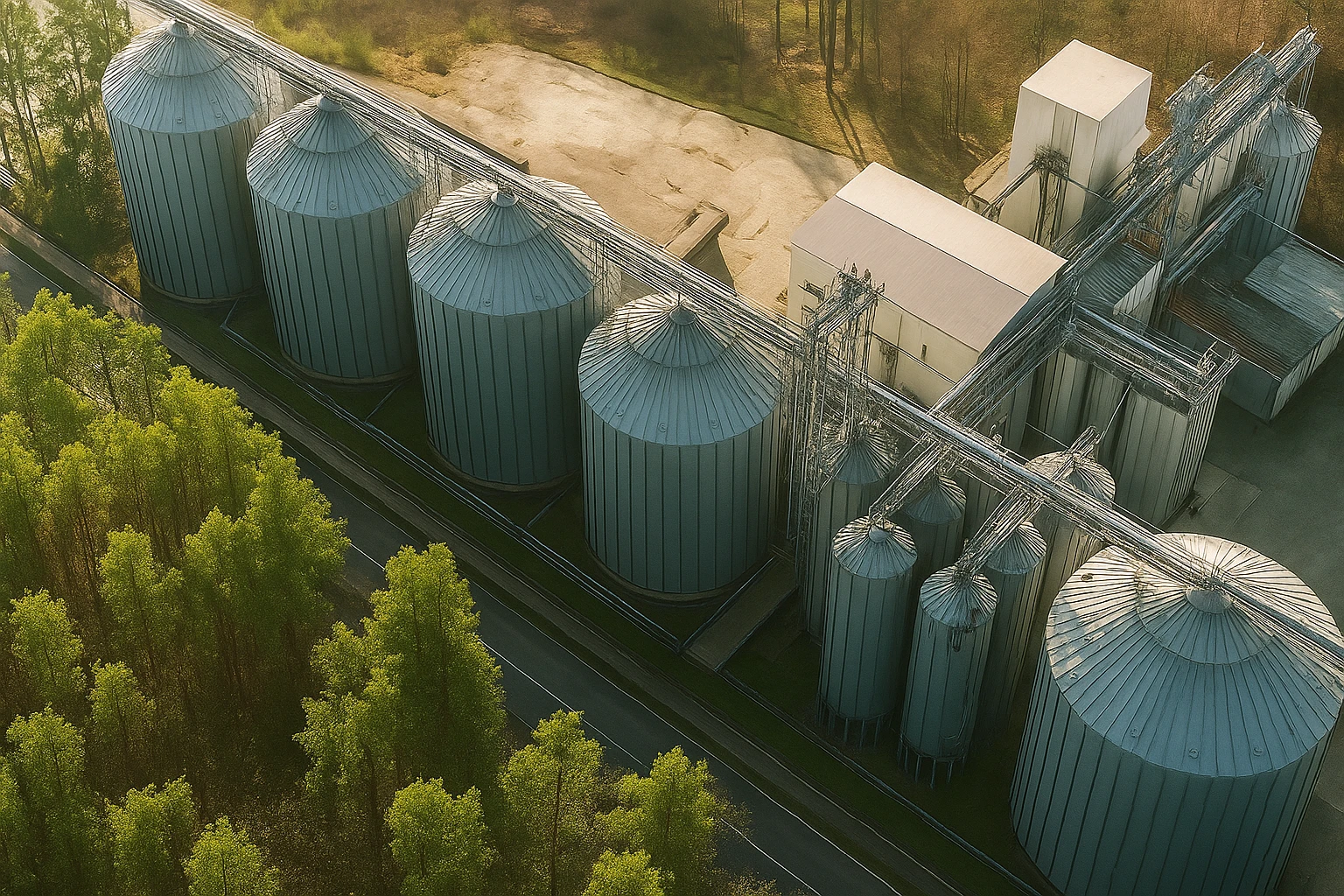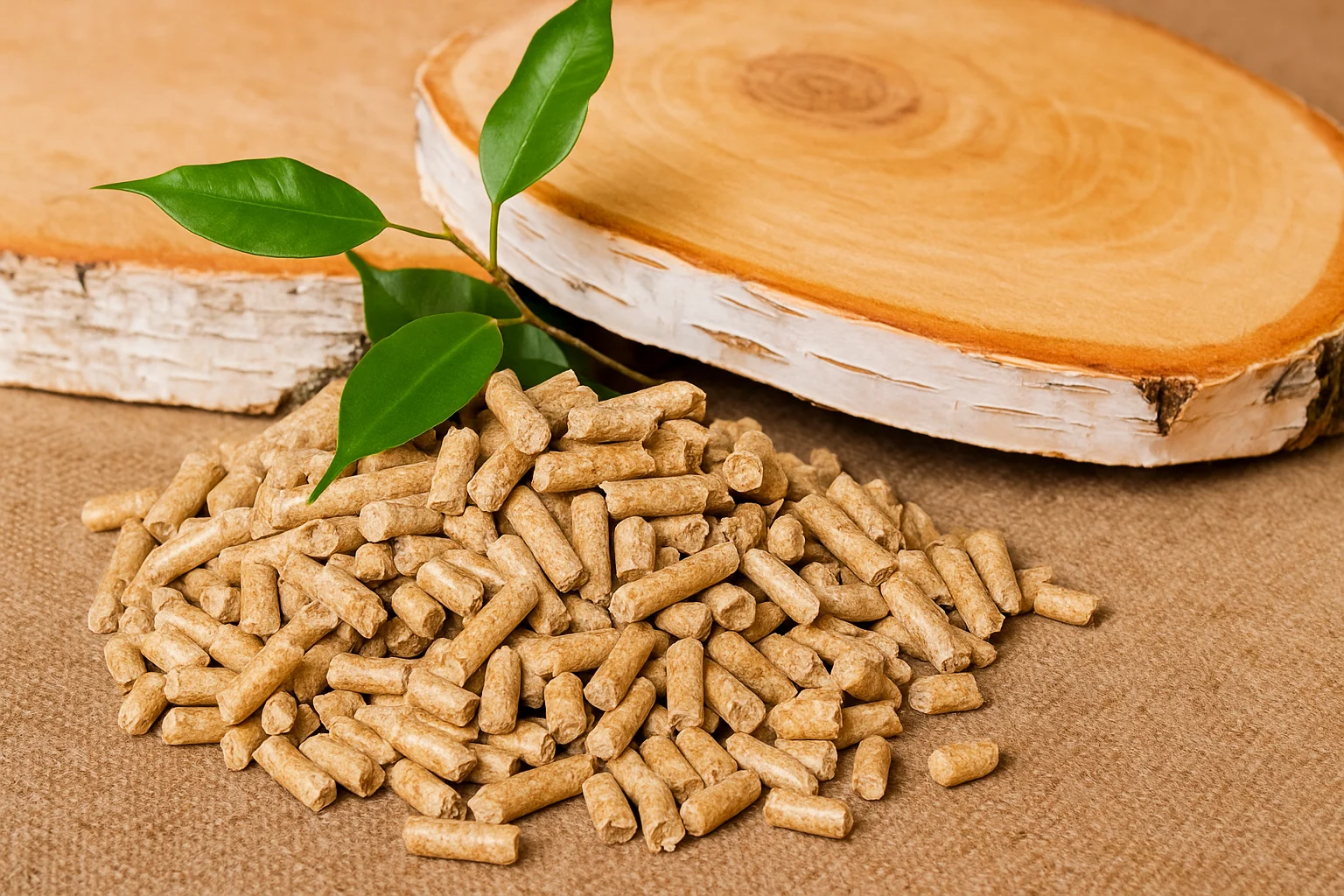
Feb 10, 2025
Wood Pellets vs. Coal: A Cost and Efficiency Comparison

Muhammad Yusuf
Market Analyst – Biomass Commodities
For decades, coal has been the dominant fuel for power generation and industrial heating around the world. It’s cheap, abundant, and produces a lot of heat. But times are changing. Environmental concerns, air quality issues, and stricter regulations are making many businesses and power plants look for alternatives.
Wood pellets are emerging as a practical replacement for coal in many applications. But how do they really compare? Is switching from coal to wood pellets worth it? Let’s break down the real differences in cost, efficiency, and practical use.
Understanding the Basics
Before comparing them directly, let’s understand what we’re dealing with.
What is Coal?
Coal is a fossil fuel formed from ancient plant matter compressed over millions of years. When burned, it releases stored energy as heat. Coal has powered the industrial revolution and still generates a large portion of the world’s electricity.
There are different types of coal:
- Anthracite: Hardest, highest energy, most expensive
- Bituminous: Most common for power plants
- Sub-bituminous: Lower energy, higher moisture
- Lignite: Lowest quality, high moisture
What are Wood Pellets?
Wood pellets are compressed sawdust and wood waste formed into small cylinders. They’re made from materials that would otherwise be thrown away from lumber mills and wood processing facilities. Unlike coal, they’re renewable—new trees can be grown to replace what’s used.
Energy Content: How Much Heat Do You Get?
One of the first questions people ask is: “How much energy does each fuel provide?”
Coal’s Energy Content
Coal produces significant heat per pound:
- High-quality coal gives more heat per pound than wood pellets
- A ton of good bituminous coal produces roughly 24-28 million units of heat
- Coal’s energy content is very consistent
Wood Pellets’ Energy Content
Wood pellets have lower energy per pound than coal:
- A ton of wood pellets produces roughly 16-18 million units of heat
- This means you need more wood pellets by weight to match coal’s heat output
- However, wood pellets are very consistent in quality compared to other biomass
The Real-World Difference
On paper, coal produces about 50% more heat per pound than wood pellets. But this doesn’t tell the whole story. Other factors matter: efficiency of combustion, emissions equipment needs, handling costs, and environmental considerations all affect the true comparison.
Cost Comparison: What’s Cheaper?
Cost is often the deciding factor. Let’s look at the full picture.
Coal Costs
Coal prices vary by region and quality:
- Mining and transportation costs
- Generally lower cost per unit of heat produced
- Prices affected by global markets
- Additional costs for emissions control equipment
- Ash disposal costs
- Potential carbon taxes or penalties
Wood Pellet Costs
Wood pellets pricing depends on several factors:
- Production and transportation costs
- Generally higher cost per unit of heat than coal
- More stable prices (less affected by global markets)
- Lower emissions control costs
- Less ash to dispose of
- May qualify for renewable energy incentives
The Total Cost Picture
Looking only at fuel cost, coal appears cheaper. But the complete financial picture includes:
Operating Costs:
- Wood pellets burn cleaner, requiring less expensive emissions equipment
- Less ash means lower disposal costs
- Cleaner combustion means less maintenance
Regulatory Costs:
- Coal faces increasing environmental regulations
- Carbon taxes or emissions penalties favor wood pellets
- Future regulations likely to favor renewable fuels
Incentives and Support:
- Renewable energy credits for wood pellets
- Government incentives for switching from coal
- Better public image using renewable fuel
When all factors are included, the cost gap narrows significantly, and in some cases, wood pellets become competitive or even cheaper than coal.
Efficiency: Getting the Most from Your Fuel
Efficiency means how much of the fuel’s energy actually becomes useful heat or electricity rather than being wasted.
Coal Burning Efficiency
Modern coal plants achieve good efficiency:
- Large power plants can be quite efficient
- Older plants waste more energy
- Requires specific equipment designed for coal
- Produces waste heat that’s often not captured
Wood Pellet Efficiency
Wood pellets can match or exceed coal efficiency:
- Modern pellet boilers are highly efficient
- Cleaner burning means more energy goes to useful heat
- Easier to control combustion precisely
- Can use existing coal infrastructure with modifications
Co-Firing: Using Both Together
Many facilities don’t switch completely but use both:
- Burn wood pellets and coal together
- Reduces emissions while using existing equipment
- Allows gradual transition
- Tests pellet systems before full conversion
Co-firing lets facilities get environmental benefits while maintaining reliability.
Environmental Impact: The Biggest Difference
This is where wood pellets and coal differ most dramatically.
Coal’s Environmental Impact
Coal burning creates several problems:
Air Pollution:
- Releases sulfur dioxide (causes acid rain)
- Produces nitrogen oxides (creates smog)
- Emits fine particles (respiratory problems)
- Mercury and other heavy metals released
Carbon Emissions:
- Releases carbon stored underground for millions of years
- Adds new carbon to the atmosphere
- Major contributor to climate change
- No way to capture all emissions economically
Other Issues:
- Mining damages landscapes
- Coal ash disposal problems
- Water pollution from mining
- Community health impacts
Wood Pellets’ Environmental Profile
Wood pellets are much cleaner:
Lower Emissions:
- Much less sulfur dioxide
- Reduced particulate matter
- Fewer heavy metals
- Overall cleaner combustion
Carbon Balance:
- Carbon released was recently absorbed by growing trees
- If trees are replanted, cycle stays balanced
- Considered renewable and carbon-neutral
- Doesn’t add ancient carbon to atmosphere
Other Benefits:
- Uses waste materials
- Sustainable if forests managed properly
- Less ash production
- No mining damage
The environmental advantage of wood pellets is clear and significant.
Practical Considerations: Real-World Use
Beyond numbers, practical factors matter when choosing between coal and wood pellets.
Storage and Handling
Coal:
- Can be stored outdoors in large piles
- Heavy and dirty to handle
- Creates dust problems
- Requires specialized equipment for large quantities
Wood Pellets:
- Must be kept dry (moisture ruins them)
- Lighter and cleaner to handle
- Less dust than coal
- Flow more easily through handling systems
- Need weather-protected storage
Equipment Requirements
Coal:
- Established technology
- Equipment widely available
- Many existing coal plants
- Expensive emissions control needed
Wood Pellets:
- Can use modified coal equipment
- New installations are efficient
- Less emissions equipment needed
- Technology proven and reliable
Supply Reliability
Coal:
- Well-established global supply chains
- Large producers worldwide
- Prices can fluctuate significantly
- Some regions reducing coal mining
Wood Pellets:
- Growing supply globally
- More regional production
- Prices generally more stable
- Supply increasing to meet demand
Who’s Making the Switch?
Around the world, facilities are converting from coal to wood pellets or adding pellet capacity.
Power Plants
Many electricity generators are switching:
- Japan and Korea importing large quantities of wood pellets
- European plants converting coal facilities
- Meeting renewable energy targets
- Reducing emissions without building new plants
Industrial Users
Factories need heat for manufacturing:
- Replacing coal boilers with pellet systems
- Meeting corporate environmental goals
- Responding to regulations
- Improving community relations
District Heating
Community heating systems are converting:
- Cleaner air for urban areas
- Using renewable local resources
- Reducing dependence on imported fossil fuels
- Lower long-term costs
The Conversion Process: Switching from Coal
Converting from coal to wood pellets is significant but manageable.
Assessing Your Facility
First, determine if conversion makes sense:
- Current coal consumption
- Equipment age and condition
- Local wood pellet availability
- Regulatory environment
- Financial resources available
Modification Options
Several approaches exist:
Full Conversion:
- Replace coal system entirely with pellet equipment
- Highest upfront cost
- Maximum efficiency and environmental benefit
- Suitable for new installations
Co-Firing:
- Burn both coal and wood pellets
- Lower initial investment
- Immediate emission reductions
- Test pellets before full commitment
Gradual Transition:
- Start with small percentage of pellets
- Increase pellet use over time
- Spread costs over longer period
- Learn and adjust as you go
Working with Suppliers
Reliable wood pellet supply is crucial:
- Long-term supply contracts
- Quality specifications
- Delivery logistics
- Storage solutions
- Backup supply options
Financial Analysis: Making the Numbers Work
Converting from coal to wood pellets requires careful financial planning.
Upfront Investment
Initial costs include:
- Equipment modifications or replacement
- Storage facility construction
- Handling system upgrades
- Testing and commissioning
Operating Cost Changes
Ongoing expenses shift:
- Fuel costs (may be higher per unit)
- Lower emissions control costs
- Reduced ash disposal
- Different maintenance requirements
- Potential incentive payments
Payback Period
Most conversions pay back in 5-10 years through:
- Avoided emissions penalties
- Renewable energy incentives
- Lower operating costs
- Carbon credit sales
- Improved corporate image
Risk Considerations
Financial risks to evaluate:
- Fuel price stability
- Regulatory changes
- Technology performance
- Supply reliability
- Market conditions
Regional Differences: Where Each Makes Sense
The choice between coal and wood pellets varies by location.
Where Coal Still Dominates
Coal remains common where:
- Local coal mines provide cheap supply
- Few environmental regulations exist
- No penalties for emissions
- Limited wood pellet availability
- Existing coal infrastructure
Where Wood Pellets Are Growing
Wood pellets make more sense where:
- Strong environmental regulations
- Carbon pricing exists
- Good biomass resources available
- Government support for renewables
- Public pressure for clean energy
Asia-Pacific Region
This region shows both trends:
- Japan and Korea rapidly expanding wood pellet use
- China still heavily coal-dependent but exploring alternatives
- Southeast Asian nations developing pellet industries
- Indonesia positioned to supply growing demand
Future Trends: What’s Coming
Several trends will affect the coal vs. wood pellets choice.
Regulatory Pressure
Expect stricter rules:
- Carbon pricing becoming more common
- Tighter emission limits
- Renewable energy mandates
- Coal plant closures in some regions
Technology Improvements
Innovation continues:
- More efficient pellet combustion systems
- Better conversion technologies
- Lower-cost production methods
- Improved logistics solutions
Market Development
The wood pellet market is maturing:
- More suppliers entering market
- Better quality standards
- Improved supply chains
- More competitive pricing
Climate Commitments
Global agreements drive change:
- Countries committed to emission reductions
- Corporate sustainability goals
- Investor pressure for clean energy
- Public demand for action
These trends favor wood pellets over coal increasingly.
Making the Decision: Coal or Wood Pellets?
The choice depends on your specific situation.
Choose Wood Pellets If You:
- Face strict emission regulations
- Want to improve environmental image
- Can access reliable pellet supply
- Qualify for renewable energy incentives
- Need to meet sustainability goals
- Expect future carbon pricing
- Value price stability
- Want cleaner operations
Stick with Coal If You:
- Have very cheap local coal supply
- Face minimal regulations currently
- Need maximum energy per pound
- Can’t modify existing equipment economically
- Lack reliable wood pellet suppliers
- Don’t face public pressure for change
For most situations in regulated markets, wood pellets are increasingly attractive despite higher fuel costs, thanks to cleaner burning, regulatory advantages, and long-term sustainability.
Indonesia’s Role in the Coal to Pellet Transition
Indonesia is unique—it’s a major coal producer and exporter, but also has huge potential for wood pellet production.
Current Situation
- Indonesia exports large quantities of coal
- Growing international pressure to reduce coal use
- Abundant biomass resources available
- Strategic location near major pellet importers
The Opportunity
Indonesia can:
- Develop wood pellet industry alongside coal
- Supply growing Asian demand for pellets
- Diversify energy exports
- Create new jobs in biomass sector
- Improve environmental image
The Challenge
Balancing interests:
- Coal industry provides significant revenue
- Transition requires investment and time
- Need to support coal workers
- Develop new biomass expertise
- Build new supply chains
Indonesia can participate in both markets as the global transition unfolds gradually.
PT. Guntala Karya Abadi: Supporting the Transition
At PT. Guntala Karya Abadi, we understand both sides of this transition. We work with customers exploring the shift from coal to wood pellets, providing the supply chain expertise needed for successful conversion.
Our Services
Supply Solutions: Whether you need wood pellets for testing co-firing or full conversion, we ensure reliable supply through our import and domestic distribution networks.
Market Knowledge: We understand the economics of coal replacement and can help you evaluate whether wood pellets make sense for your operation.
Quality Assurance: Converting from coal requires consistent pellet quality. We work only with suppliers meeting proper standards so your equipment runs reliably.
Logistics Support: We handle the complexities of sourcing, shipping, and delivering wood pellets so you can focus on your core operations.
Whether you’re a power plant exploring options, an industrial facility facing emission regulations, or simply wanting to understand the coal versus wood pellets question better, we can help.
The Bottom Line
Comparing wood pellets and coal isn’t just about energy content or fuel costs. It’s about the complete picture: environmental impact, regulatory environment, long-term sustainability, and total operating costs.
Coal produces more energy per pound and often costs less as fuel. But wood pellets burn much cleaner, face fewer regulatory restrictions, qualify for incentives, and represent a renewable alternative.
For many operations, especially in regions with environmental regulations and access to wood pellet supply, switching from coal makes economic and environmental sense. The transition is happening globally, driven by climate concerns, regulations, and improving pellet economics.
The future belongs to cleaner energy sources. Wood pellets offer a practical, proven pathway to reduce coal dependence while maintaining reliable energy supply. As technology improves and markets mature, this transition will continue accelerating.
Whether you’re considering switching from coal or simply want to understand your energy options better, wood pellets deserve serious evaluation as a viable, cleaner alternative to coal.


